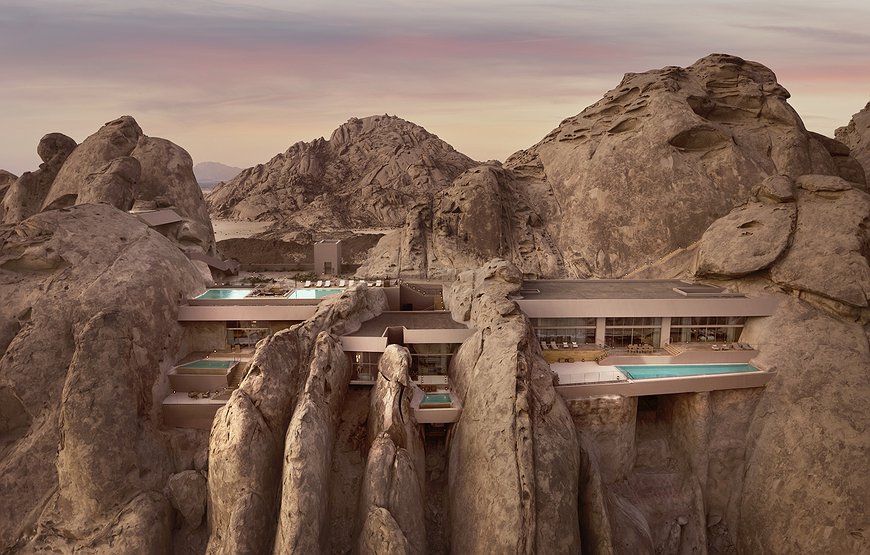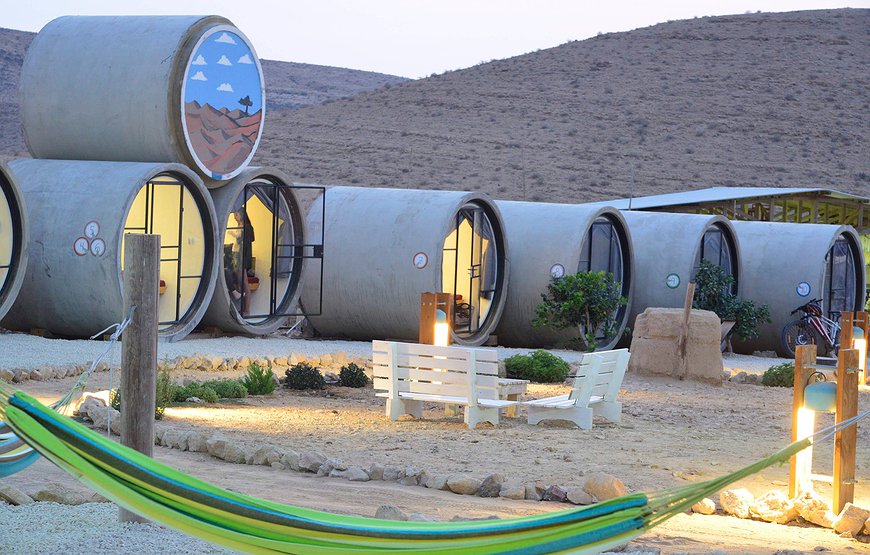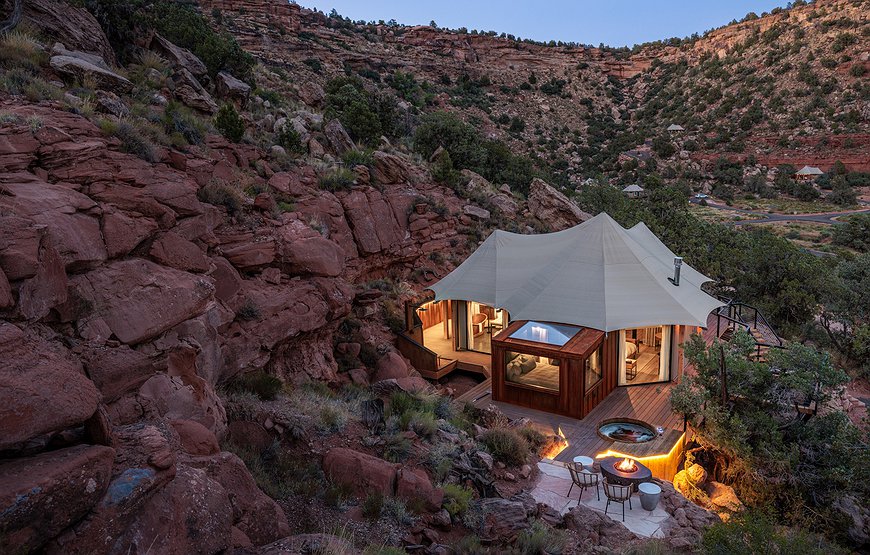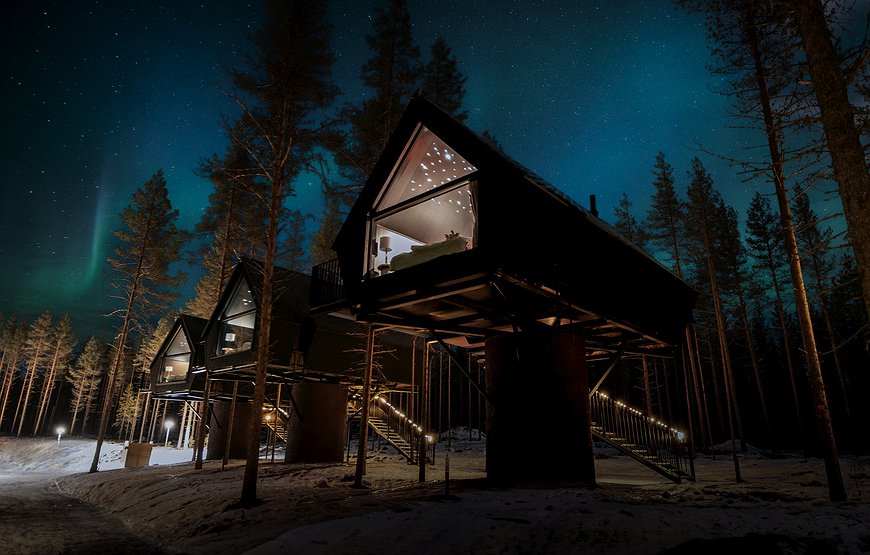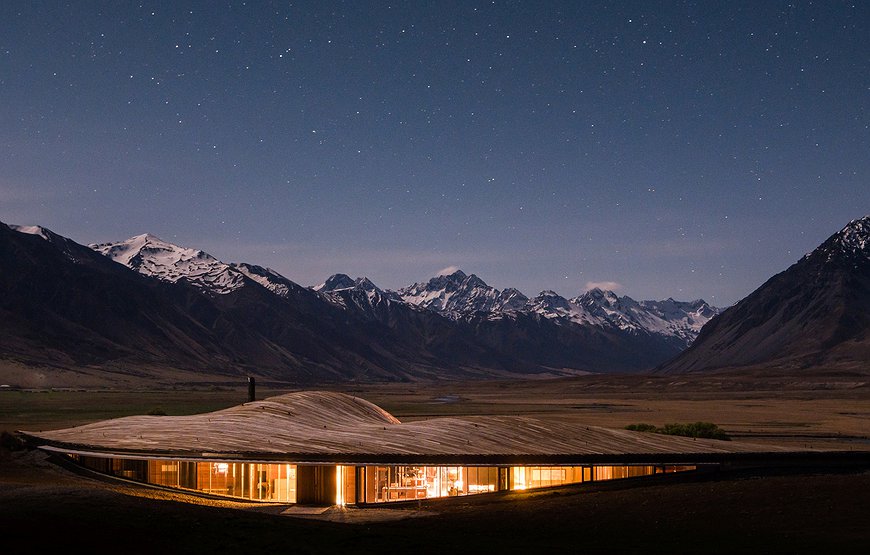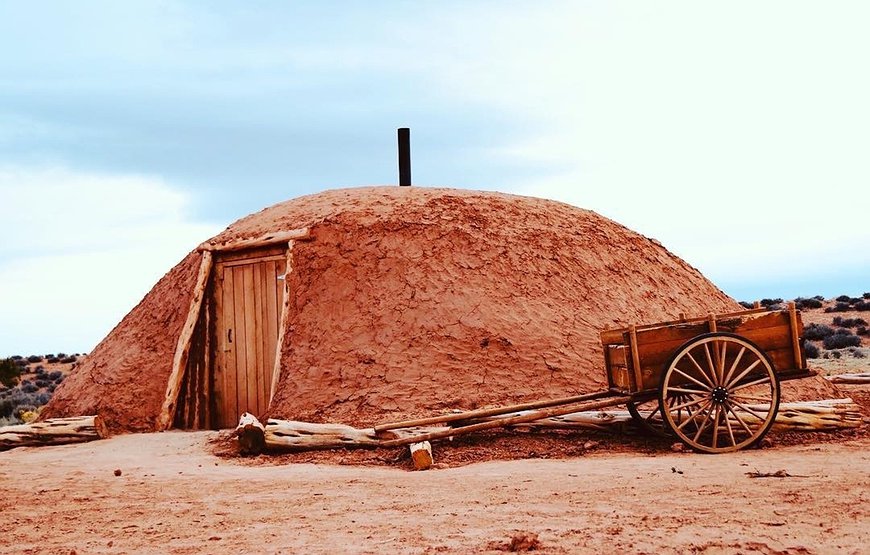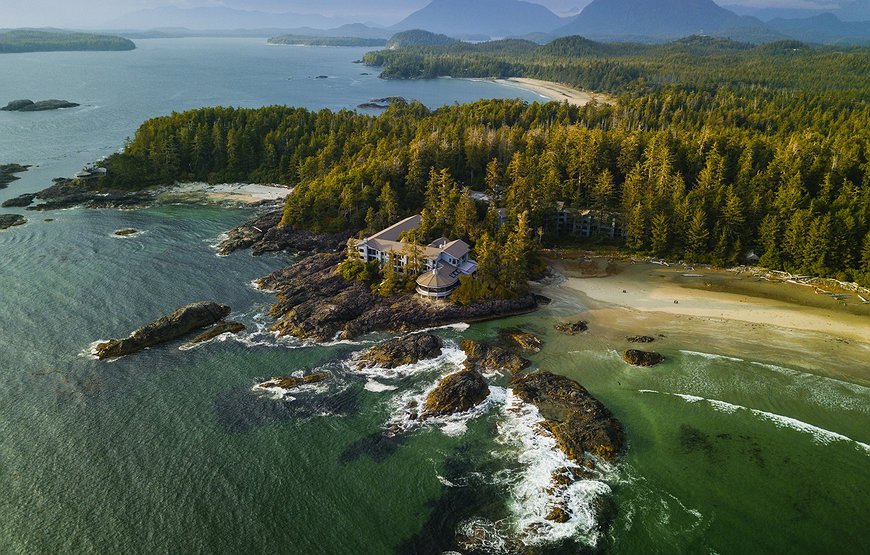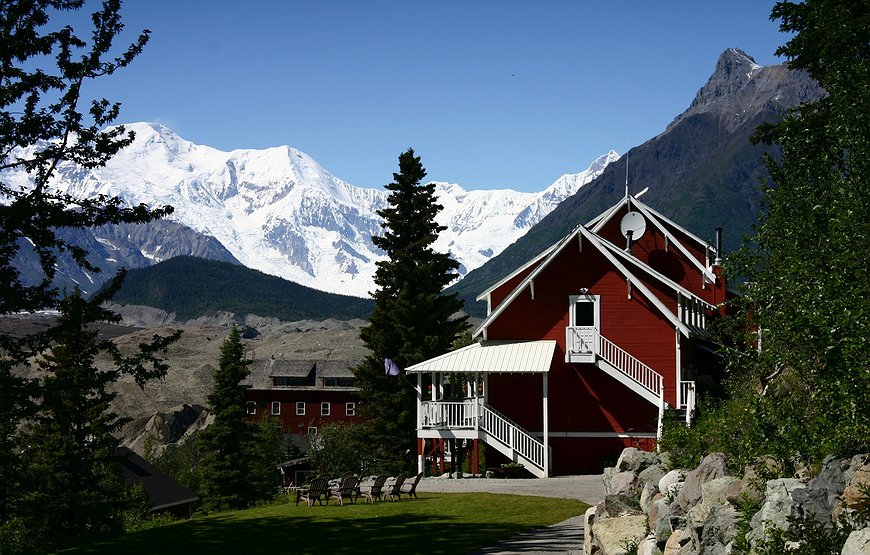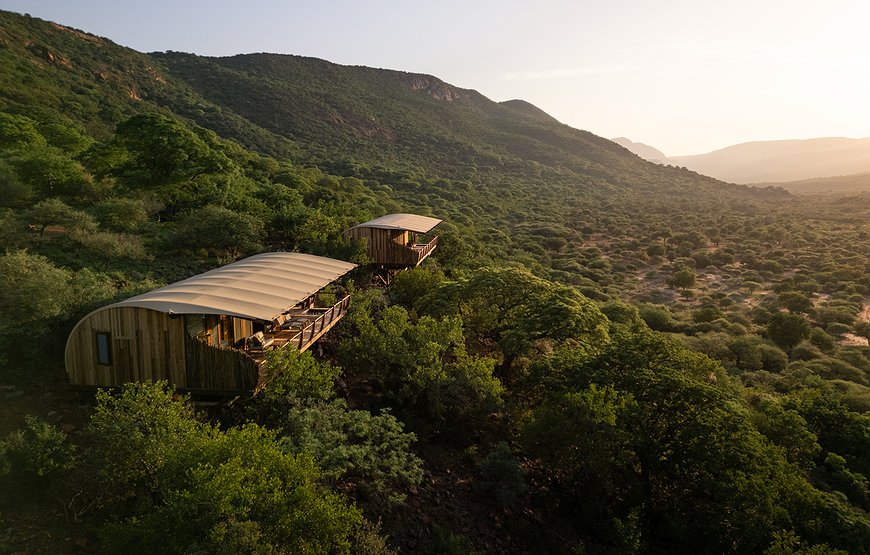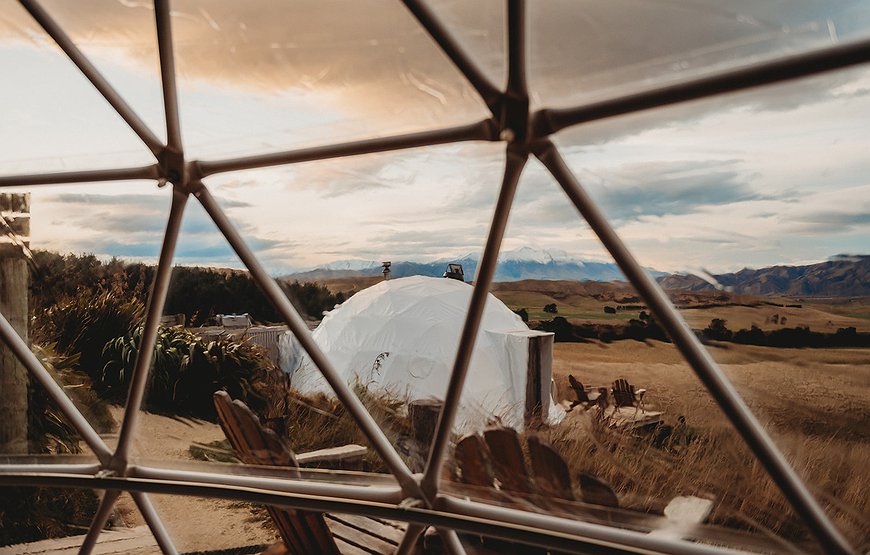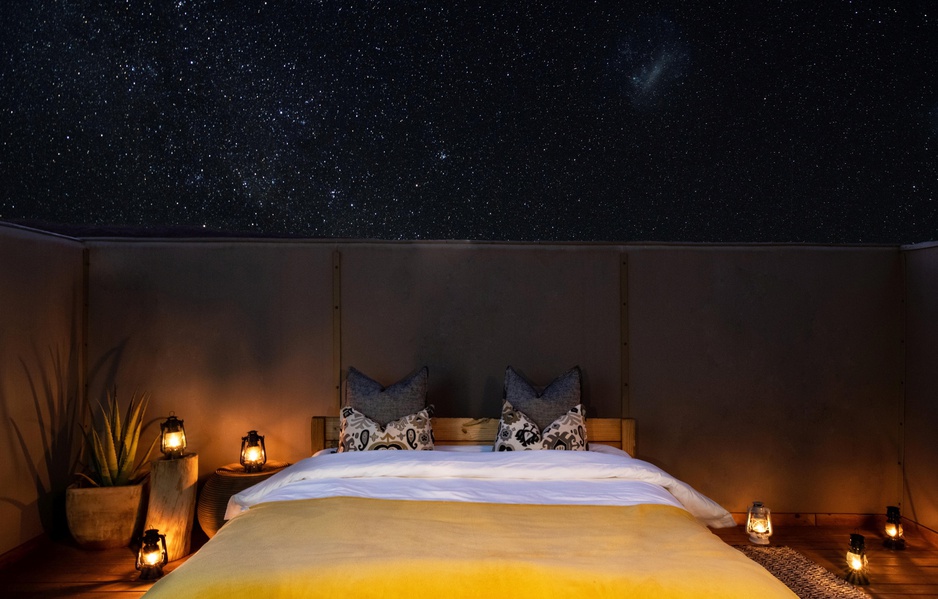
Deep in Namibia's NamibRand Nature Reserve, where the desert stretches for 200,000 hectares beneath mountains that look like they've been carved from stone, there's a place where the night sky puts on such a show that you'll wonder why you ever bothered with city lights. Kwessi Dunes is that place – a small lodge that opened in 2020, comprised of twelve canvas and thatch chalets built on what used to be traditional farmland. It's the kind of retreat that appeals to people who've grown tired of the predictable luxury lodge experience and crave something more honest about what the wilderness actually offers.
A Reserve Built on Conviction
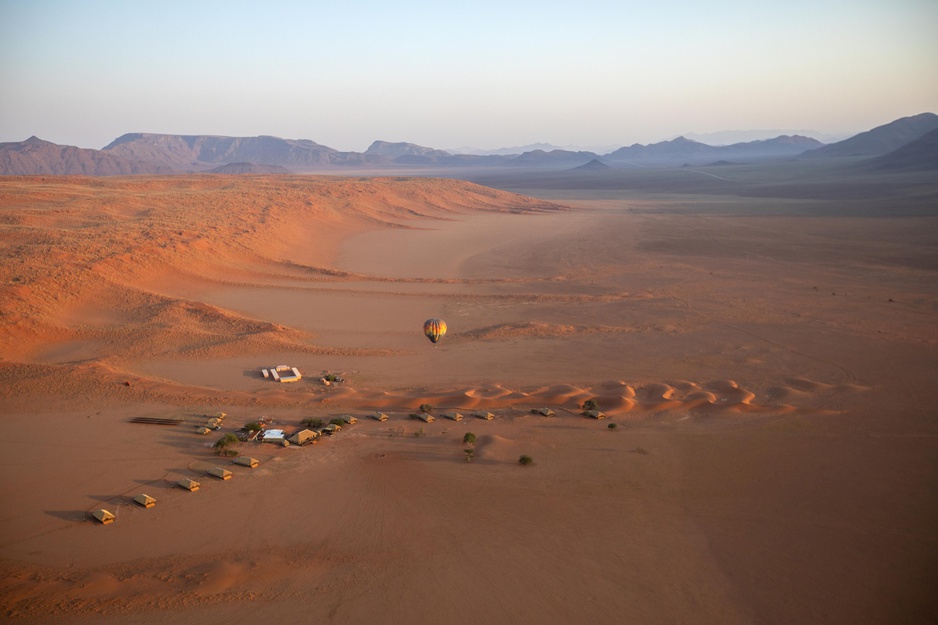
The NamibRand Nature Reserve has an unusual origin story. In the 1980s, a conservationist named Albi Bruckner bought several livestock farms and combined them into a protected wilderness area – a radical move that transformed the landscape into a model of what preservation can look like. Today, the reserve operates under strict rules: there are limits on how many lodges can exist here, and limits on how many rooms each lodge can have. This isn't accidental – it's deliberate. The reserve was built on the principle that tourism can sustain conservation only if it remains controlled and low-impact.
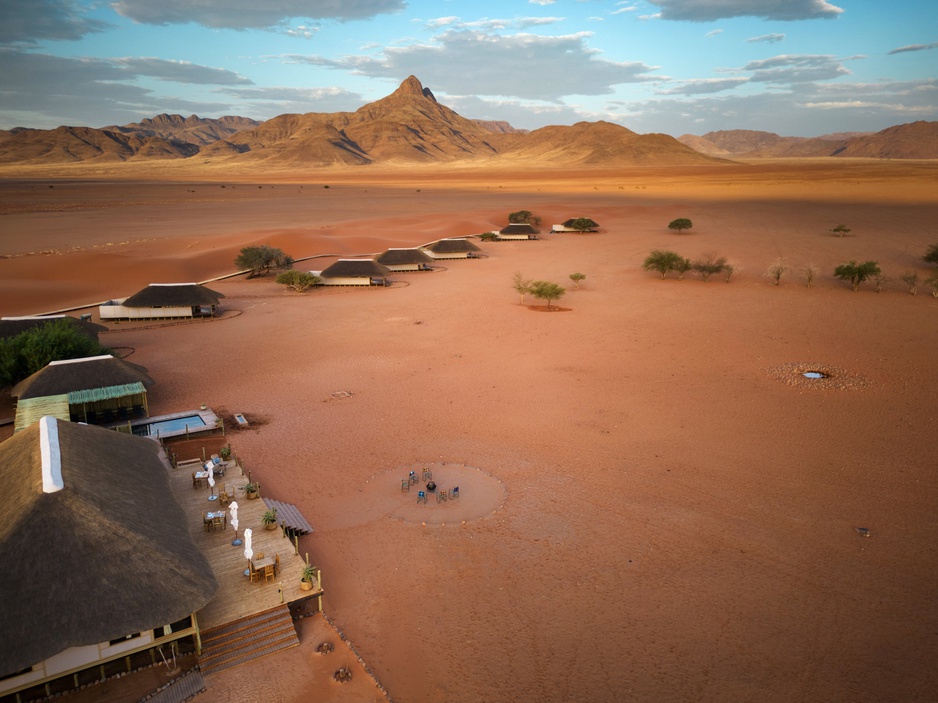
Kwessi Dunes operates within this framework. The lodge sits 4 to 5 hours' drive from Windhoek, or about an hour by charter flight. From Windhoek airport, you can reach it by self-drive, though the journey involves tackling remote roads across Namibia's interior. The alternative – a light aircraft to the lodge's private airstrip – gets you there faster and deposits you directly into the desert landscape.
The Main Lodge
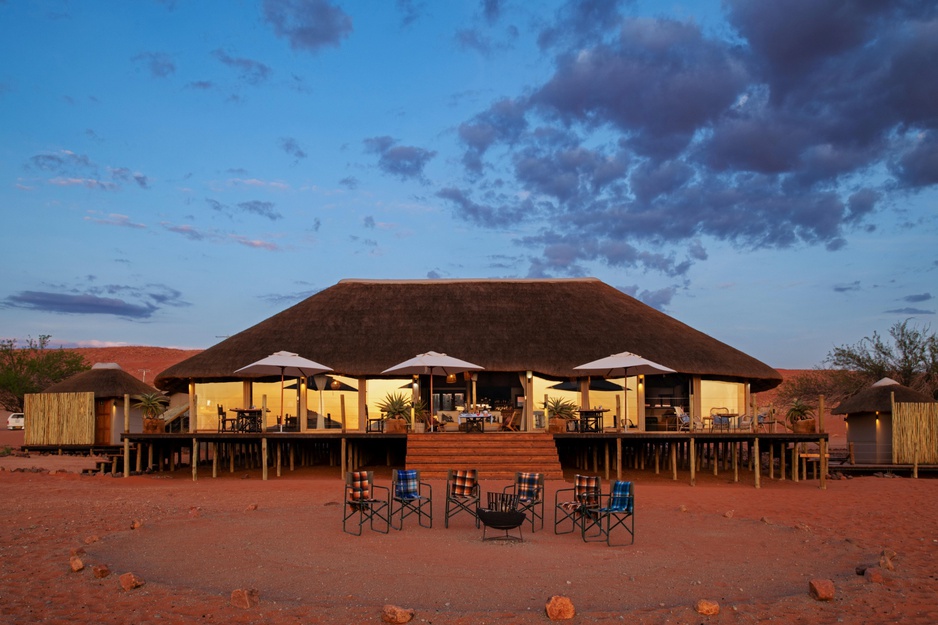
The heart of Kwessi is its main lodge building, a structure of high thatch ceilings and solar panels that speaks to both comfort and environmental responsibility. The design is deliberately unpretentious.
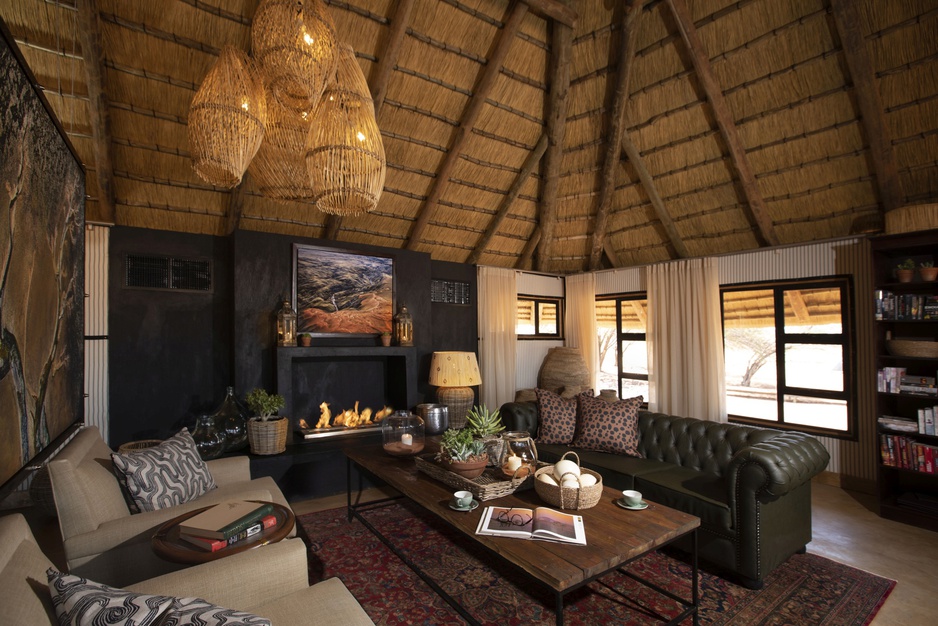
Inside, there's a well-stocked bar, a small library, and plenty of seating scattered across the space – the kind of layout that encourages you to find your own corner.
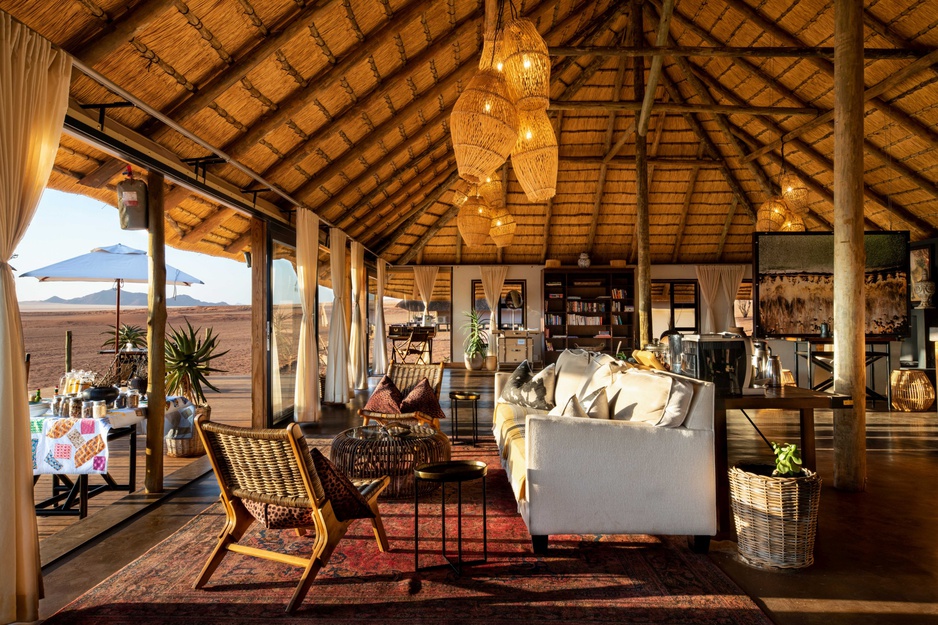
The front opens onto a veranda that frames the endless desert beyond, with folding glass doors that retract entirely so the view becomes uninterrupted.
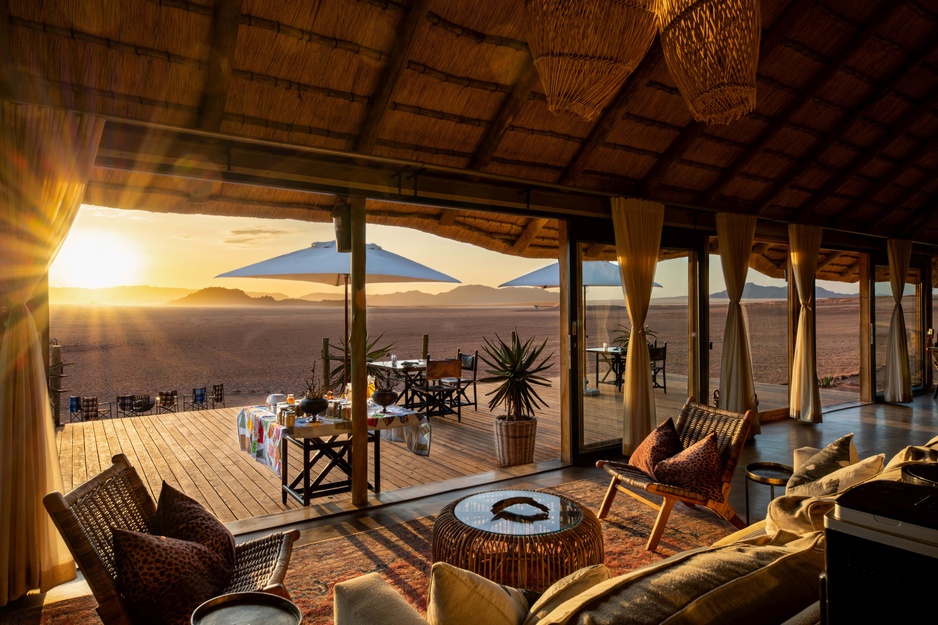
Outside, the lodge maintains a fire pit area where you can gather in the cooler evenings, and a small swimming pool that sits incongruously in the middle of the sand – an oasis within an oasis.
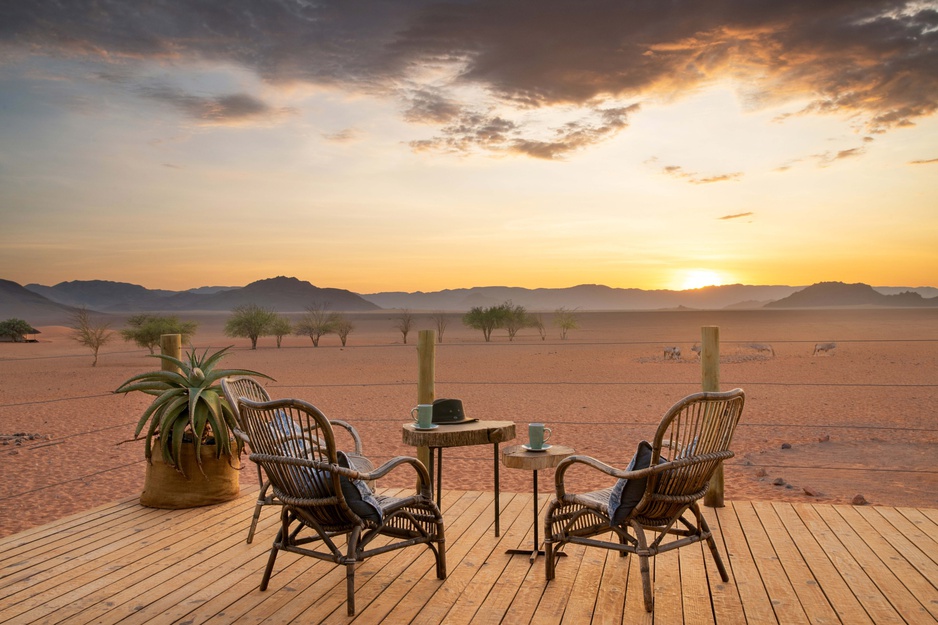
The entire operation runs on solar power, with water sourced from an abundant borehole that keeps the pool full even during the hottest months. There's wi-fi available if you can't quite commit to total disconnection, and the charging facilities mean your devices won't die on you.
The Chalets: Canvas and Comfort
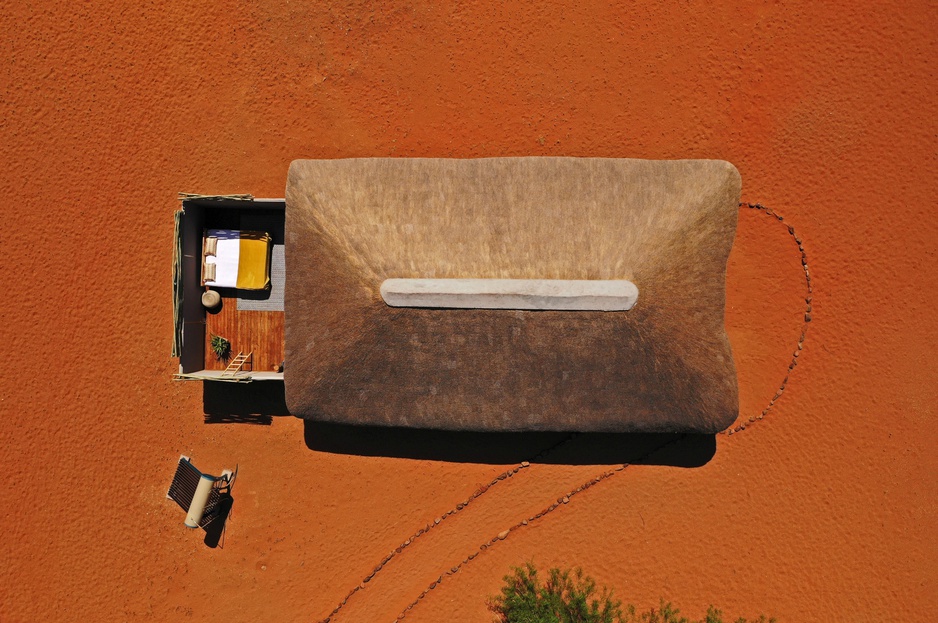
Desert Chalet with an open stargazing bed
Twelve chalets make up the accommodation. Ten are twin or double rooms, while two are larger family units designed for groups.
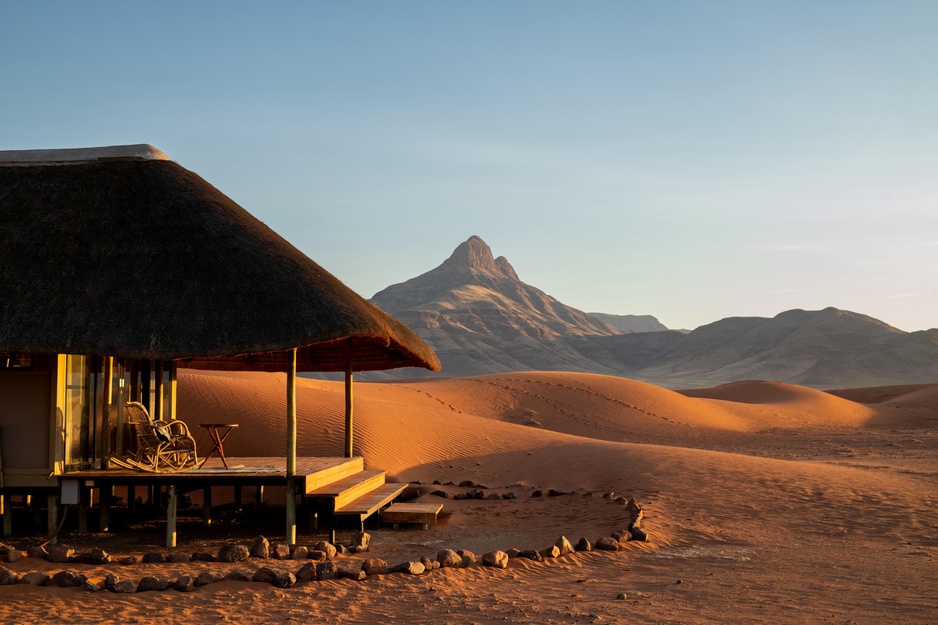
Each chalet follows the same architectural language – striped canvas walls, a high thatched roof, and a simple philosophy that prioritizes staying cool when the desert temperature climbs.
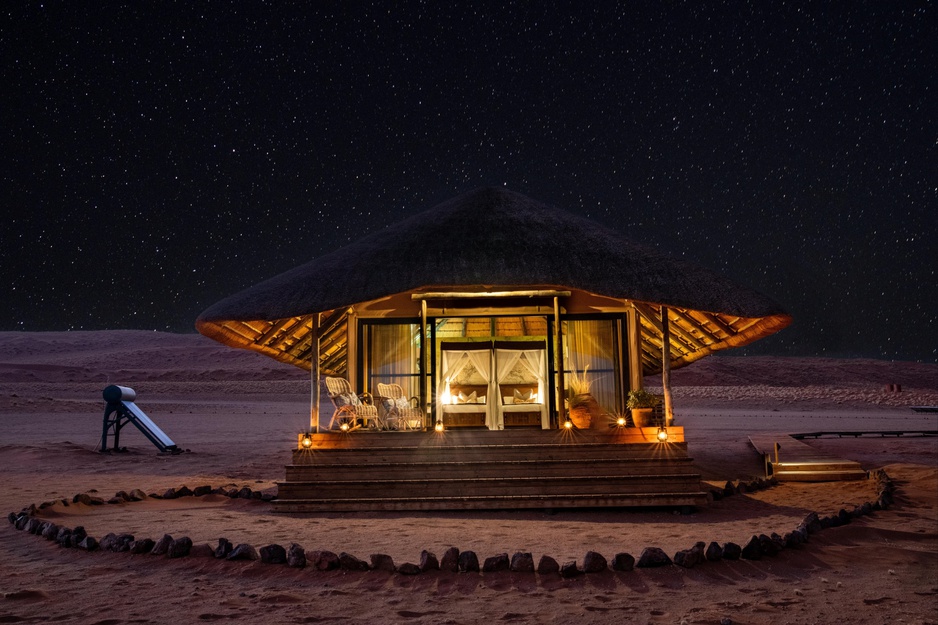
Inside each chalet, the décor mixes practical desert living with something more intentional. There are vintage four-poster beds (twin or double in the standard rooms, king and twin in the family units), contemporary steel lamps alongside old maps and leather chairs, and Persian-style carpets over the floor.
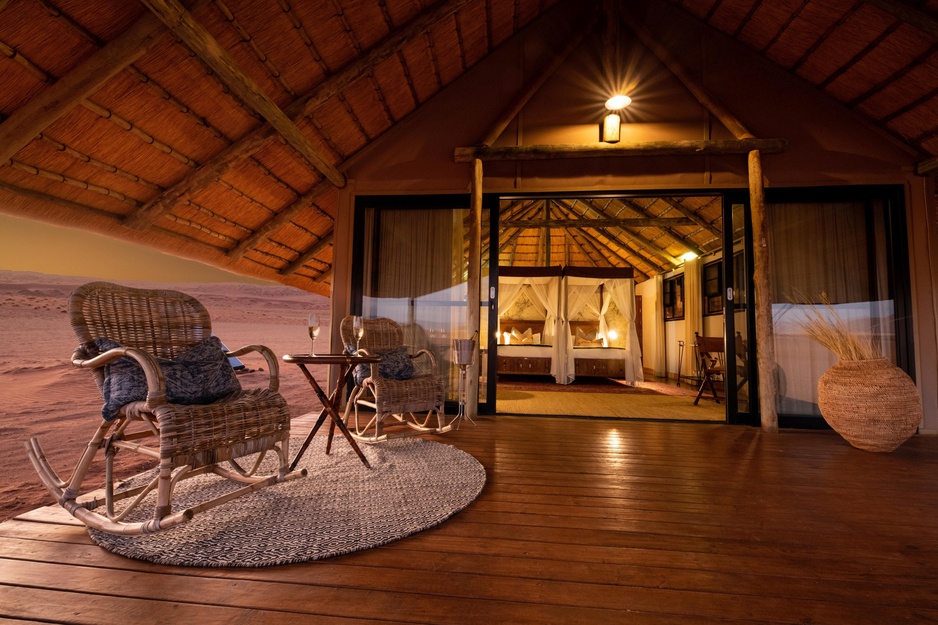
The color palette reflects the landscape itself – ochres, reds, and earth tones that make the rooms feel less like they've been imposed on the environment and more like they've emerged from it.
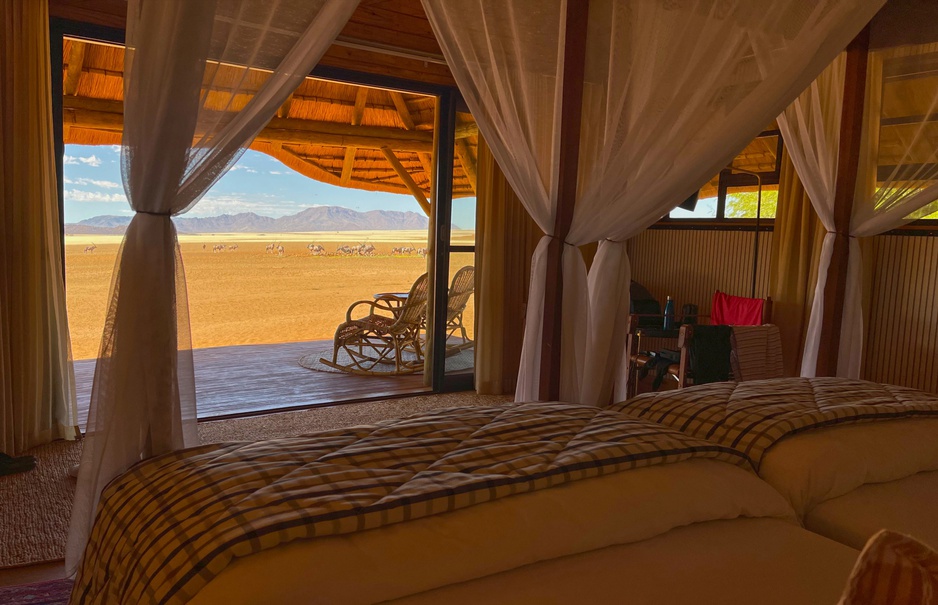
Air conditioning runs throughout, because no amount of romance with the desert changes the fact that temperatures can soar.
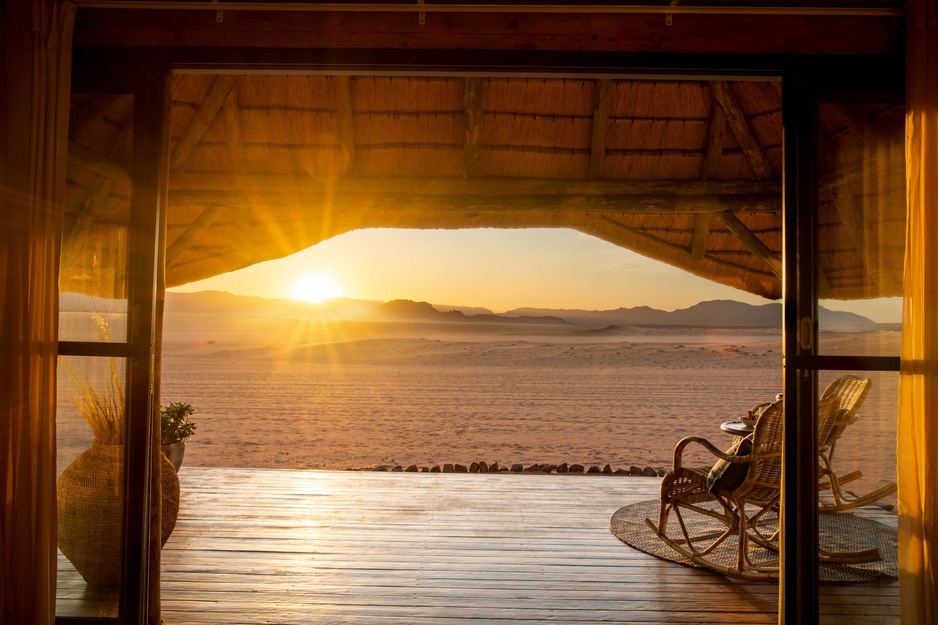
Each chalet has a shaded veranda at the front – a private space where you can sit with coffee in the morning or a sundowner in the evening, watching the desert beyond.
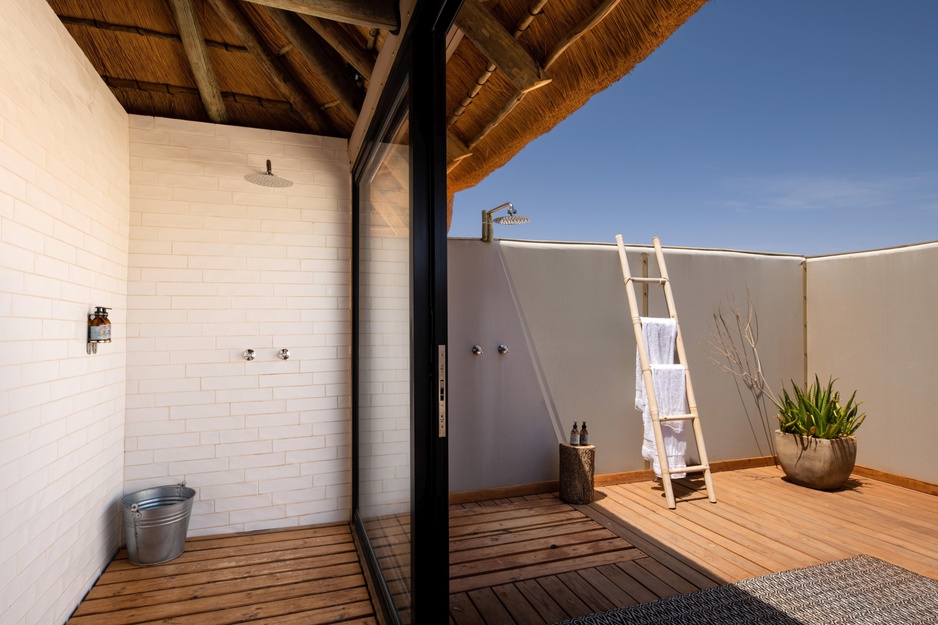
The bathroom is spacious and practical, with both an indoor shower and an outdoor option.
The Star Gazer Room: Your Own Piece of the Universe
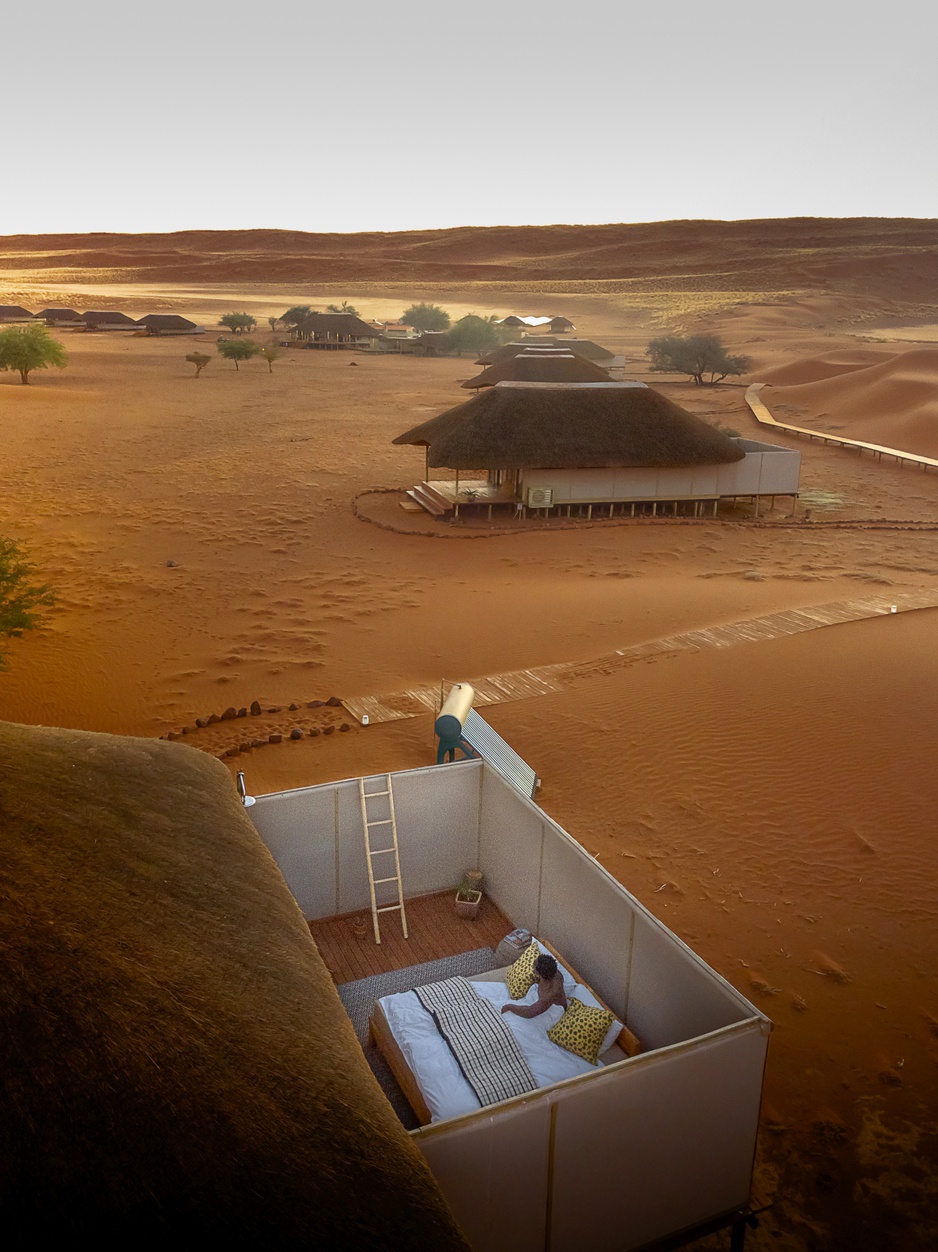
But the real innovation at Kwessi sits at the back of each chalet: a separate star gazer room, completely open to the sky. This is a bed – and nothing but a bed – positioned so that when you're lying down, all you see is the cosmos above. There's no roof, no walls, just the night and whatever constellations happen to be burning overhead.
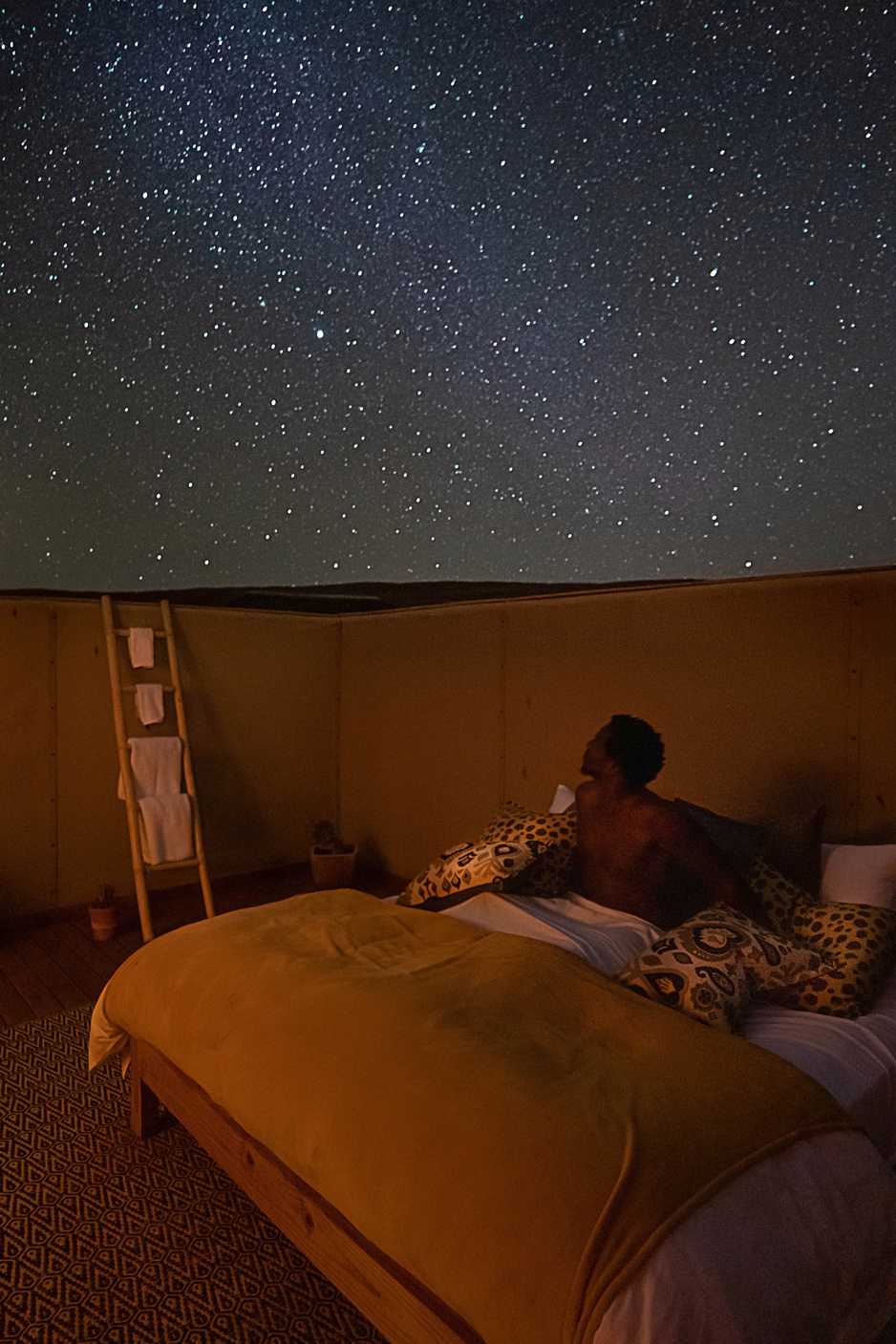
The NamibRand is Africa's first internationally designated Dark Sky Reserve, which means the light pollution is virtually nonexistent. Out here, the Milky Way isn't a pale suggestion of itself – it's a river of light so intense that it casts shadows. You can see millions of stars, trace the outline of Orion, follow satellites as they cross the void. Many people describe sleeping here as the highlight of their stay, and it's not hard to understand why.
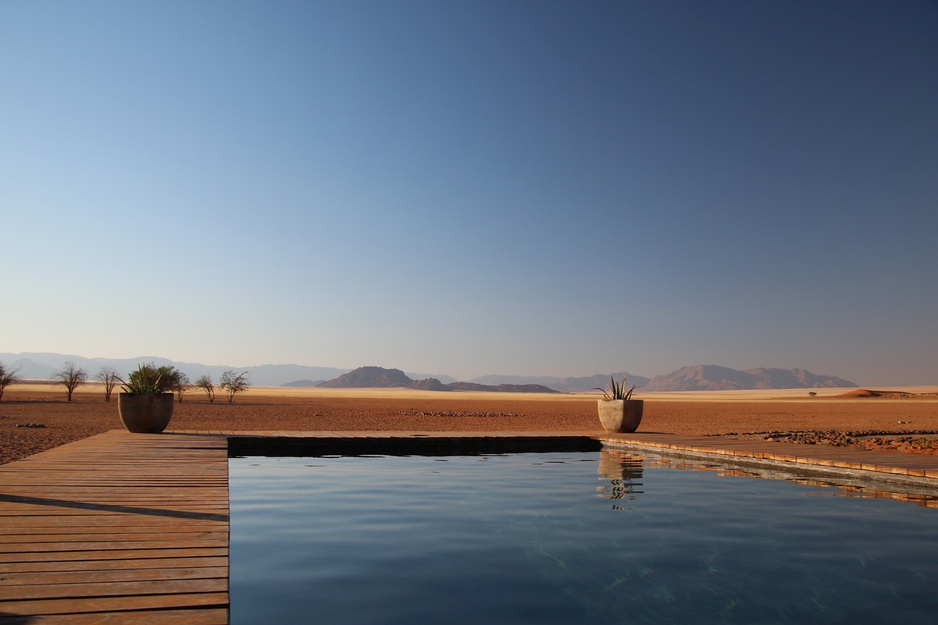
The pool is small – there's no pretending otherwise – but it serves its purpose. In the middle of the day, when the temperature climbs past comfortable, you can slip into the cold water and float while the desert surrounds you.
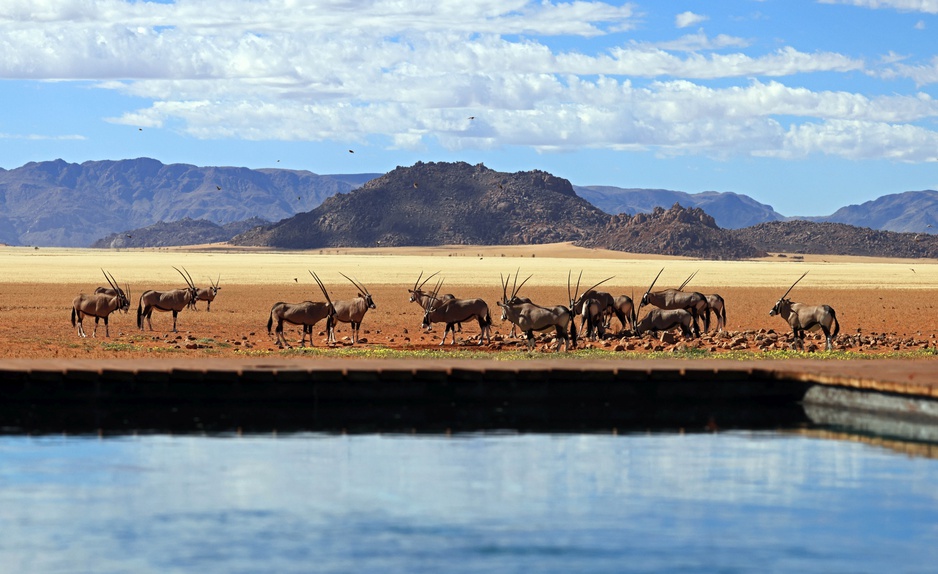
The surreal part comes when wildlife wanders past: herds of oryx or springbok might stroll by, entirely unbothered by your presence, while you're suspended in this small circle of blue in an ocean of sand.
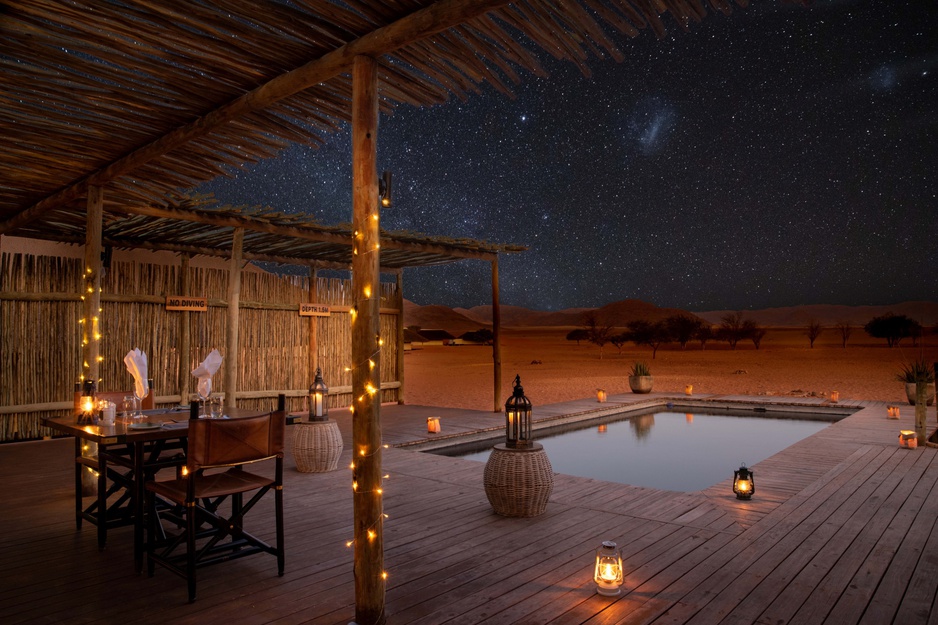
Private pool dinner
The lodge can arrange private dining on request – a way to eat separately from other guests if you prefer, or to have a more intimate setup. Otherwise, meals tend to be communal affairs, eaten with guides and other guests around shared tables.
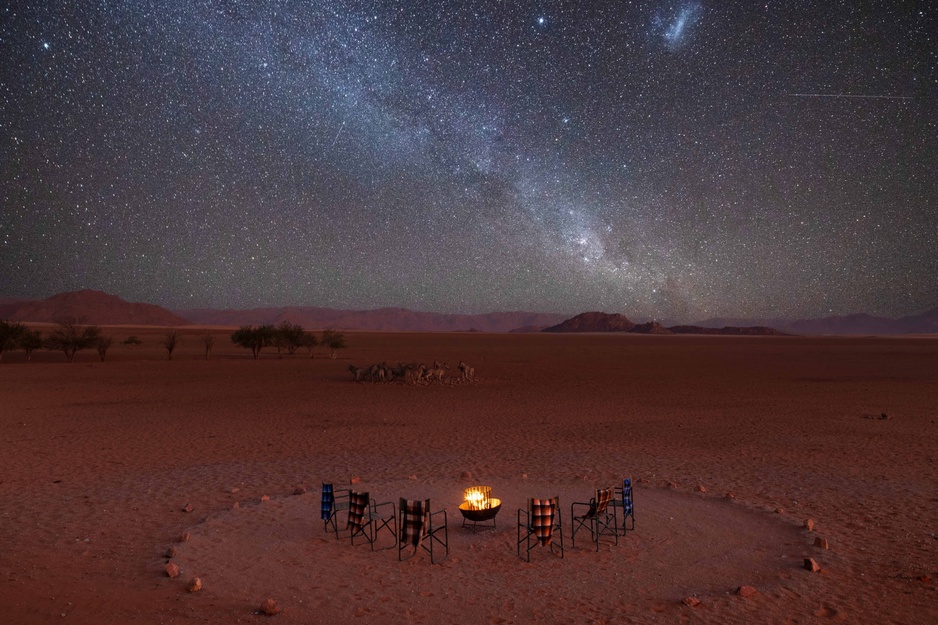
In the evening, when the desert cools and the sky begins its transformation, you gather around the fire pit with other guests and guides. This is where a sundowner drink tastes better than it ever will anywhere else – nothing around you but sand, mountains, and the approaching darkness. As night deepens, the fire becomes a small pool of warmth in an immense landscape, and above it, the stars emerge in such density that they seem to multiply as your eyes adjust.
The Surrounding Wildlife
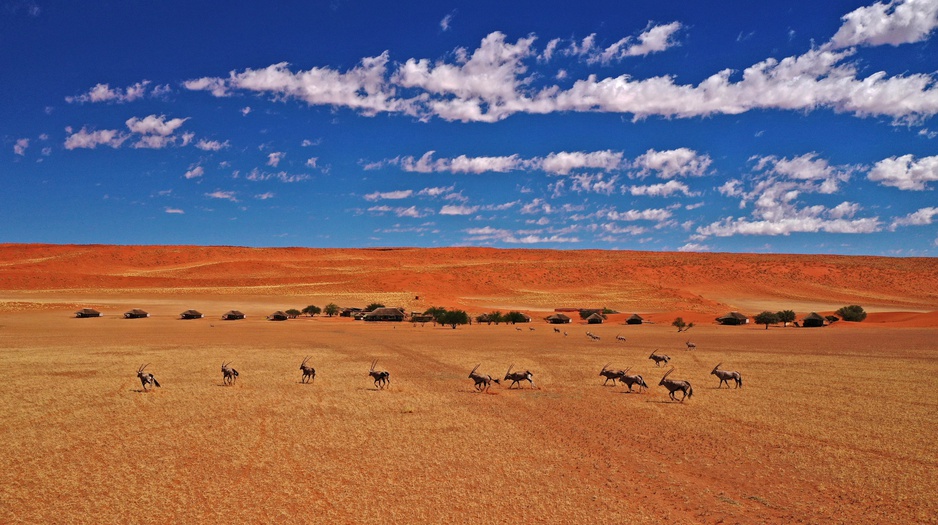
Antelopes
You won't find the Big Five here – the desert simply isn't their habitat. What the NamibRand does have is an array of animals that have adapted to thrive in one of the harshest environments on Earth. The gemsbok, for instance, has a white belly that reflects heat away from the body, and a sophisticated vascular system in its brain that cools the blood before it reaches the brain tissue. These are evolutionary elegances, solutions to problems that only the desert poses.
The bat-eared fox is smaller but equally specialized – those enormous ears aren't there for show. They amplify sound frequencies so effectively that the animal can hunt insects underground by hearing their movements. You'll see these creatures regularly, often in the early morning or late afternoon.
The most numerous animals here are antelopes. From gemsbok to springbok, kudu to steenbok – these even-toed ruminants scatter across the red sand like silhouettes cut from the landscape. Burchell's zebra move through the dunes in small groups. Black-backed jackals, aardwolves (a hyena species), and African wild cats appear more frequently here than in many other African reserves. Leopard and cheetah exist in the reserve, but in small numbers – you're lucky if you see them.
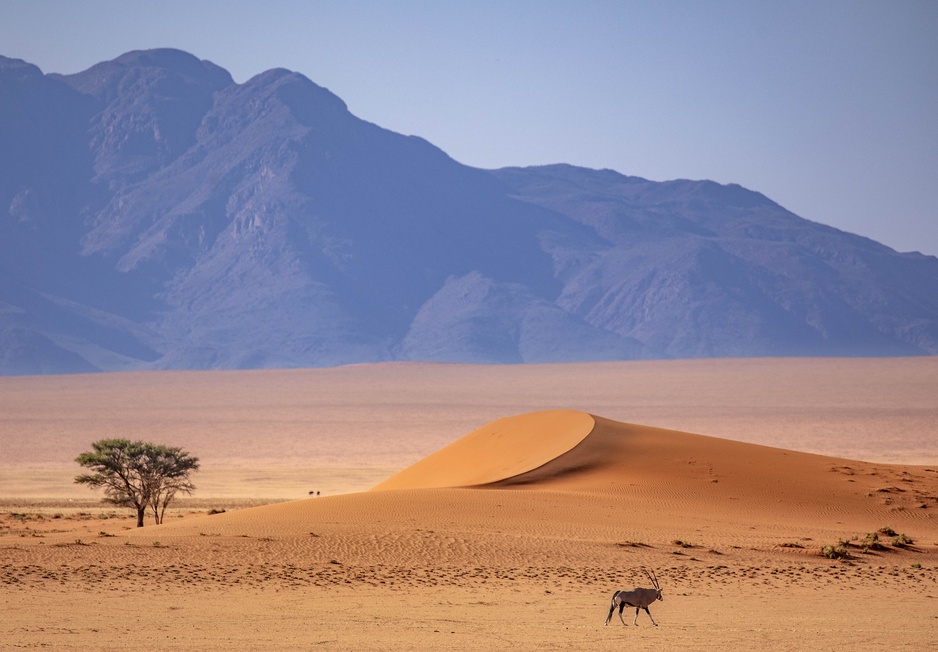
Oryx
One mystery adds to the landscape's strange beauty: the fairy circles. These bare patches of earth, ranging from a few meters to several meters across, dot the ground in patterns that seem almost too geometric to be natural. Over decades, scientists have proposed theories – poisonous fungi, termite colonies, meteor impacts – but nobody knows for certain. They simply exist, adding to the sense that this is a place operating according to rules you don't quite understand.
Nature Walks
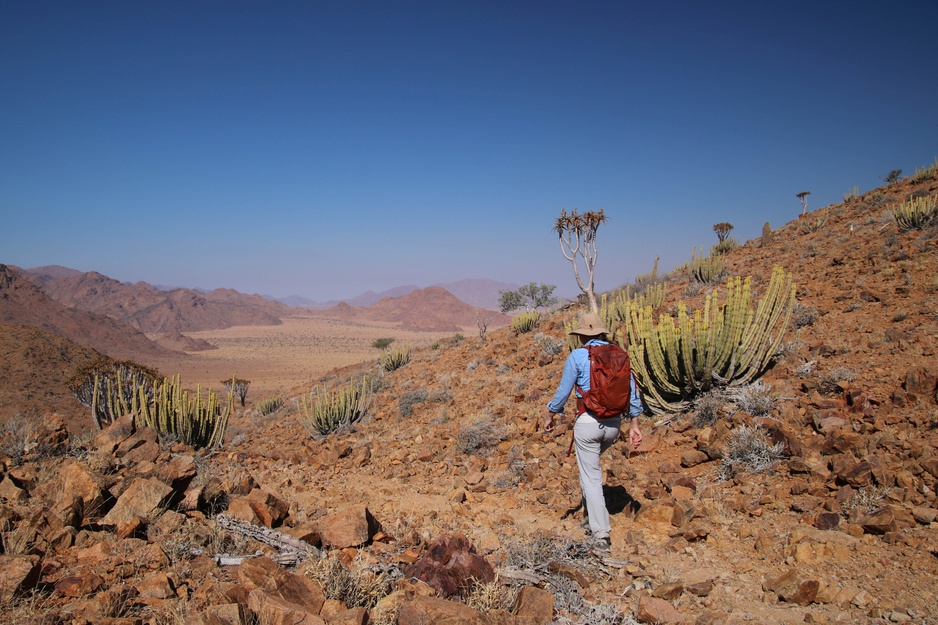
NamibRand Nature Reserve nature walks
Beyond the vehicle-based exploration, you can explore on foot with a guide. A nature walk typically lasts around 3.5 hours and covers ground slowly enough that you notice details – the way plants have adapted to survive on minimal water, how animals behave when they're not being chased, the social structures that hold together a community as small and scattered as this.
The guides teach as you walk, sharing knowledge about survival adaptations and ecology. But equally importantly, they connect this landscape to its human history. The San Bushmen have lived here for thousands of years, hunting and gathering according to seasonal patterns and deep knowledge of the land.
Deadvlei
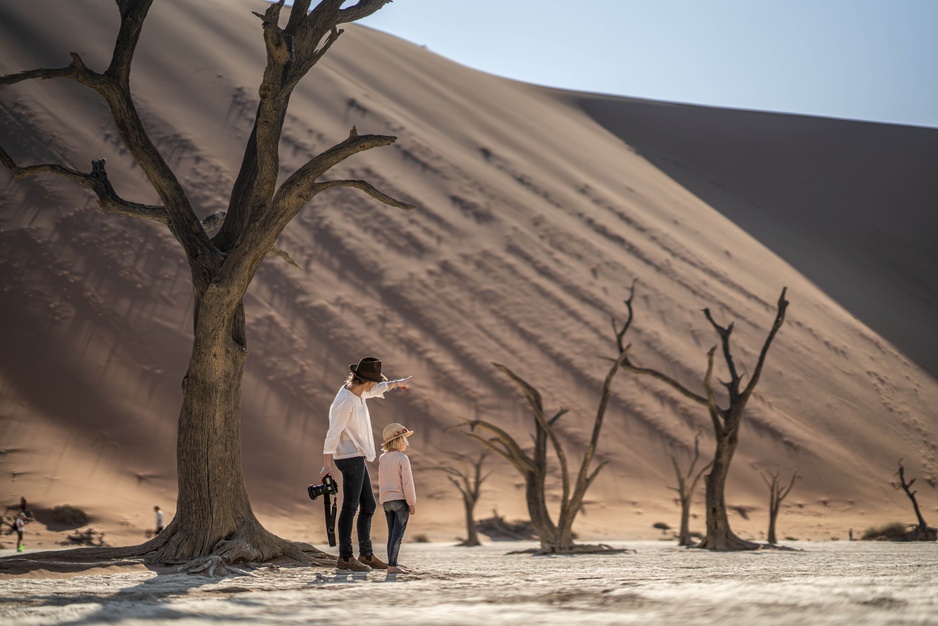
Deadvlei
For many visitors, a day trip to Sossusvlei is the signature excursion – the chance to climb the world's tallest sand dunes and watch sunrise paint them colors you didn't know sand could hold. But Deadvlei, just beyond Sossusvlei, offers something different. It's a saltpan dotted with the fossilized remains of acacia trees, trees that died roughly 900 years ago when climatic shifts dried up the water source. They stand as dark skeletons against white salt and red sand – a landscape that looks almost unreal, as if it's been staged for a film about the end of the world.
4WF2+HQ8 NamibRand Nature Reserve, Sesriem, Namibia

